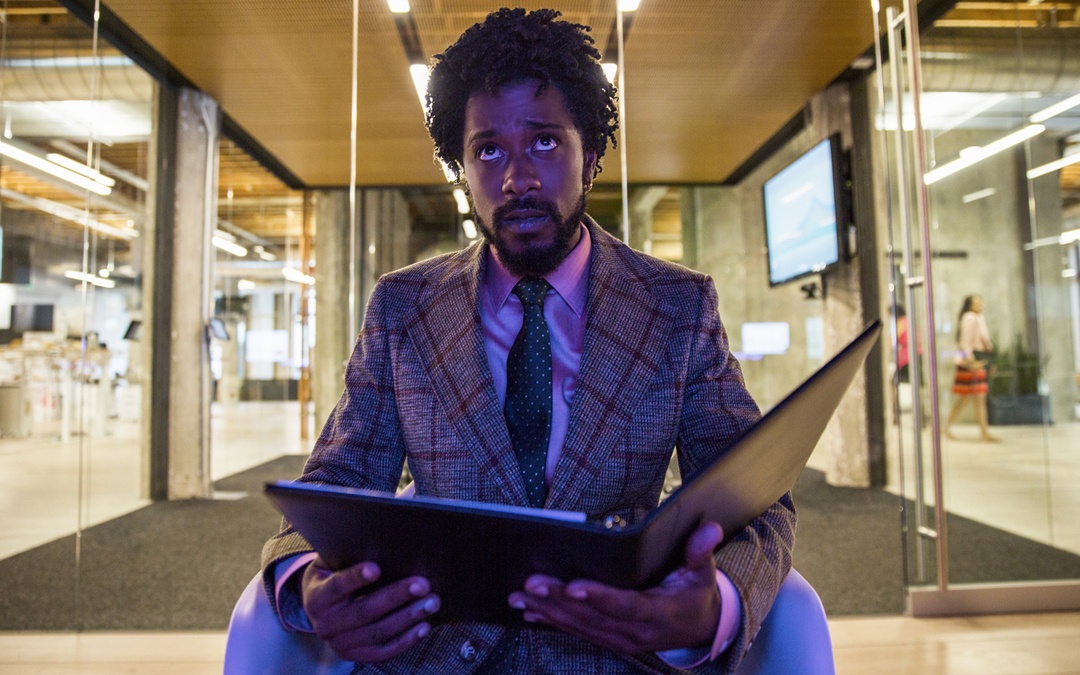All the Write Moves: High Flying Bird
February 18, 2019
“They invented a game on top of a game,” observes a veteran coach in the new sports drama High Flying Bird. Within the context of its scene, the line refers to how long ago, white NBA executives created an infrastructure to retain control at the inflection point when the league was racially integrated. Yet as provocative as that theme is, it is just one truth imbedded within the line about a “game on top of a game.” High Flying Bird uses the prism of professional sports to explore the fundamental notion of institutional control. This has implications related to art, to society, and even to world affairs.
It should therefore come as no surprise that the screenwriter of High Flying Bird is Tarell Alvin McCraney, who shared an Oscar® with Barry Jenkins for the groundbreaking script of Moonlight (2016). Over the course of just two features, McCraney has established himself as a deeply serious dramatist eager to use mainstream film as a platform for addressing tough issues. Working with another determined artist, celebrated director Steven Soderbergh, McCraney supplies the soft-spoken High Flying Bird with myriad threads of resonant commentary.
Given the picture’s lofty aspirations, it’s helpful to examine the tools McCraney uses to keep High Flying Bird grounded; for had he not employed these tools, the movie could easily have evaporated in a puff of well-intentioned rhetoric. Despite being challenging and meditative, High Flying Bird takes something akin to the satisfying shape of a Hollywood narrative.
THE TELLING VIGNETTE
Since High Flying Bird is a dialogue-driven picture with rapid-fire and/or lengthy conversations powering nearly every scene, McCraney leans into that aspect of the film’s style right from the beginning. The picture’s first significant scene is a meeting between the film’s protagonist, sports agent Ray Burke (André Holland), and his client Erick Scott (Melvin Gregg), recently named the NBA’s top draft pick. Hanging over the entire story is an NBA lockout, so Erick is anxious. In the course of this scene, Ray inspires, instructs and insults Erick, using every conversational maneuver he can to retain influence over him.
This scene does a number of important things at once. Firstly and most obviously, it establishes the basic storyline in terms of the NBA lockout and Ray’s role in the representation game. Secondly and less obviously, the scene underscores the film’s overall theme before that theme has been named for the audience; Ray uses his skill to control the naive Erick. Later in the film, when the coach makes his remark about “a game on top of a game,” we realize that Ray is complicit in the nefarious scheme to which that remark refers.
Thirdly and just as importantly, the scene demonstrates Ray’s greatest strength, which is his extraordinarily agile mind. He sees the angles, plays them to his advantage, and more often than not, finds the right words — whether contrived or genuine — with which to achieve his goals.
Opening a movie with a barrage of dialogue doesn’t always work, but when it’s the right approach for the film’s overall aesthetic, it can allow the writer to build narrative and thematic infrastructure quickly.
Takeaway: If you use dialogue heavily, make the dialogue purposeful.
PERSONAL HISTORY
The coach isn’t the only character with whom Ray shares personal history. In fact, few characters with whom Ray interacts are new acquaintances. This is by design for at least two reasons.
Structurally, because High Flying Bird unfolds in a (mostly) linear fashion over a fairly condensed period of time, stacking the cast with characters whom Ray knows allows for storytelling shortcuts. The first time we see Ray with his assistant Sam (Zazie Beetz), they engage in rat-a-tat dialogue that gives a brisk snapshot of their interpersonal dynamic. Similarly, when Ray engages with Spence (Bill Duke), the coach who provides that all-important quote, we instantly sense that they’ve travelled many miles together, metaphorically speaking. Building personal history into the structure allows McCraney to skip over time-consuming scenes of Ray forming new relationships.
Thematically, this technique allows McCraney to attack big ideas immediately. Characters who already know each other pick up conversations that are in progress, and they advance dialectics that may never be resolved. Therefore we, the audience, get to skip guarded or polite exchanges that might have occurred early in the process, moving straight to debate. In a movie about ideas, that excision of preliminaries is crucial.
Takeaway: Joining a relationship already in progress can lead to substance quickly.
PLANTING A SEED
One of the most essential tools in every screenwriter’s arsenal is the setup/payoff. It could even be argued that every screen story is an elaborate setup/payoff, with the first act’s inciting incident creating anticipation for the third act’s resolution. Often, we see the setup/payoff manifest as a line of dialogue, such as when a character says something like, “I need to find out who I am,” in Act One and then says something like, “Now I know who I am,” in Act Three. Another manifestation of setup/payoff in dialogue is the establishment of a line early in a movie and the ironic repetition of that line, with new meaning gained through context, later in the movie (example: “Yippee-ki-yay, mother…”).
Not every setup/payoff is dialogue. In High Flying Bird, the setup/payoff is an object. During the aforementioned scene between Ray and Erick, Ray gives Erick a package and says it contains a bible, elaborating that it’s not literally a religious tome, but something just as useful. Erick asks if he should open the package now, but Ray says words to the effect of no, you’ll realize when it’s time. The filmmakers show the book in several subsequent scenes, reminding the audience that a significant revelation is impending. How this pays off won’t be spoiled here — particularly because it’s a small pleasure instead of an explosive plot twist — but the example is sufficient to illustrate a reliable technique.
On one level, placing a setup creates inherent tension through the manipulation of audience expectations, since we’re wired to hunger for the payoff. On another level, placing a setup adds dramatic heft, since the longer we wait for the payoff, the more significance we assume that payoff will hold once it finally arrives. High Flying Bird favors the latter aspect, but it benefits from the former as well.
Takeaway: Slow burns generate powerful heat.
Written by: Peter Hanson
Peter Hanson is a Los Angeles-based writer, filmmaker and teacher. He directed the screenwriting documentary Tales from the Script, and he teaches at Pepperdine University and UCLA Extension. He provides script consulting at www.GrandRiverFilms.com.- Topics:
- Discussing TV & Film




